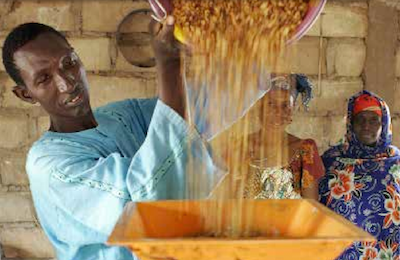Nutrition Behavioral Change and Communication

Having nutrition sensitive food systems in place, assuring that food is available, accessible, diverse and nutritious is no guarantee for nutrition improvement. In addition it is key to help consumers make healthy dietary choices for themselves and their children.
Many public and private development actors have contributed to rising levels of awareness on nutrition and health, however often the translation of this knowledge into actual behavioral change lags behind. There is a need for innovative approaches to drive behavioral change. One of these approaches is the multichannel Behavioral Change Communication (BCC). This is defined as: tailored messages and approaches using a variety of communication channels to develop positive behaviors; to promote and sustain individual, community, and societal behavior change; and to maintain appropriate behaviors (USAID, 2004). While women in general are the principal care takers of infants and young children, they depend on and are influenced by their husbands and families. Households depend on local circumstances and basic services, which are influenced by village doctors, community health workers, farmer cooperatives, local entrepreneurs as well as local and regional authorities. This means all these actors could play a role in enabling the desired behavior. Multichannel communication not only increases the change that the direct target group receives and understands the message, but also that indirect target groups, who could enable desired behavior, receive the message as well.
In addition to BCC, social marketing can play a key role in influencing the behavior of target households to improve their livelihood. This is in line with the definition of social marketing: social marketing is the application of commercial marketing technologies to the analysis, planning, execution and evaluation of programs designed to influence the voluntary behavior of target audiences in order to improve their personal welfare and that of society 1.
From a public health perspective there is a tendency to focus on needs. With a market-led approach the target group is approached as consumers with demands and aspirations.
| “The most common mistake among unsuccessful market-based solutions involves confusing what low-income consumers need with what they want.”
|
Broad experience with marketing strategies among Base of the Pyramid consumers revealed that it is important to obtain insights in their aspiration, ability, capability and motivation. One needs to understand their demand which could be obtained by observing and/or listening to people’s desires motivation and aspirations.
A combination of above mentioned innovative approaches towards sustained behavior change are for example included in the Profitable Opportunities for Food Security Program (PROOFS) in Bangladesh. This program is being implemented by ICCO, IdE, BoP Innovation Centre and Edukans and is being financed by the Dutch Ministry of Foreign Affairs. The nutrition intervention package consists of the following components:
- Nutrition sales agents – who engage in door to door visits and group sessions, providing messages and related products. A social marketing toolkit is being developed including traditional tools such as leaflets as well as interactive apps to be used on tablets. The approach will play a major role in improving access to nutritious food and hygiene products and drive behavioral change towards more diverse diets.
- Nutrition fairs – these will be organized at regional level for a number of communities, bringing together separate interventions and boost attention, awareness, aspirations, demand and desired behavior. Interventions are to include cooking demonstrations and competitions, folk songs, street theater, marketing of food and hygiene products. During these fairs the focus is not only on women as producers, mothers and housewife’s, but also on men as husbands and fathers, as well as local community workers, entrepreneurs and authorities.
- Nutrition capacity building of farmer business groups – making use of their group meetings nutrition information will be shared.
PROOFS project launched in Bangladesh
Innovative Food and Nutrition program approved in Bangladesh
References
- ↑ A.R. Andreasen. Marketing Social marketing in the social change marketplace, 2002

